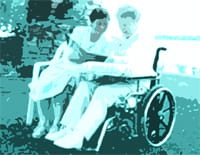Youth Violence: What Parents Can Do
Whether it’s bullying, dating or street violence, child sexual abuse, assaults, or murders, violence and abuse are taking a huge toll on our nation’s youth.
Incidents like those at Columbine and Newtown, and sexual abuse by clergy and coaches, grab the headlines due to their shock value and the sheer numbers and ages of the victims. But the problem is widespread, and the statistics are stark and telling.
Data from the U.S. Centers for Disease Control and Prevention show that homicide and suicide are the second- and third-leading causes of death of American children. Every year, more than 707,000 youth ages 10 to 24 receive emergency treatment for injuries from physical assaults, and more than 3 million reports of child abuse are filed.
Parents can help to reduce this violence, and as two physicians — a pediatrician and a child and adolescent psychiatrist — who are deeply concerned about what’s happening to our youth, we offer here some basic information for parents, along with some steps to take to protect their children.
Violence is a learned behavior, and exposure to it can come from different sources: the home, the community, and the media. Children and adolescents learn from their experiences and think that what they see and experience are normal. A history of exposure to violence, then, can be traumatizing and lead to violent behavior. If there’s violence in the home, children are more likely to be violent in the future, whether the home is with their family or within their community.
With visual media — television, movies, and video games — children think that what they see is the way the world works. They can believe that violence is OK and that it’s fun to watch. Viewing too much violence can be desensitizing and lead to aggressive behavior.
What can parents do? Limit screen time to a few hours a day or less, know what children are watching, and talk about media violence with them. Discuss such questions as: was that real or pretend? Was that the best way to solve a problem? What would happen if you did something like that?
Another critically important concern is guns in the home. The safest home is one without a firearm, but if there is a gun at home, it should be kept locked, with the ammunition locked separately. Shootings at home often occur when a friend or family member is mistaken for an intruder, when a fight between those living in the home gets out of control, or when a child finds a gun. And young children — whose curiosity is stronger than their sense of danger — may not know the difference between a toy gun and a real gun. Another risk is suicide, the third-leading cause of death of teenagers.
Beyond firearms and media violence, it is important for parents to establish what we call ‘protective factors’ to keep children from becoming involved in violence. These fall into four categories: individual, family, peer groups, and the community.
Individual protective factors include having a trusted adult to confide in, using humor to defuse tense situations, engagement in school academics, or participating in an activity like photography or art. Those related to family involve open communication and a supportive environment. The opportunity to discuss challenges and problems with loving adults — at family dinners, for example — can have a powerful influence on behavior. And children who know their parents are there for them are less likely to resort to violence to solve conflicts. Peer-group and community protective factors might cover participation in school activities and belonging to groups such as youth agencies or church clubs. The feelings of belonging and learning how to do something well are irreplaceable.
These factors lead young people to form connections, not only with their peers but also with adults, and children who feel connected add meaning and purpose to their lives. They learn how to trust and how to manage their moods and relationships better. And the more purpose and success a child has, the less likely they are to be violent. v
Dr. Robert Sege is director of the Division of Family and Child Advocacy at Boston Medical Center and a member of the American Academy of Pediatrics Committee on Child Abuse and Neglect. Dr. Elliot Pittel is a child and adolescent psychiatrist with the Home for Little Wanderers in Boston and chair of the Mass. Medical Society’s Committee on Violence Intervention and Prevention. This article is a service of the Mass. Medical Society.


Comments are closed.